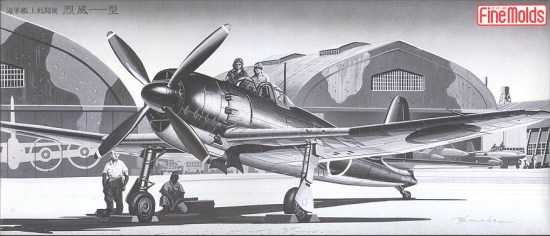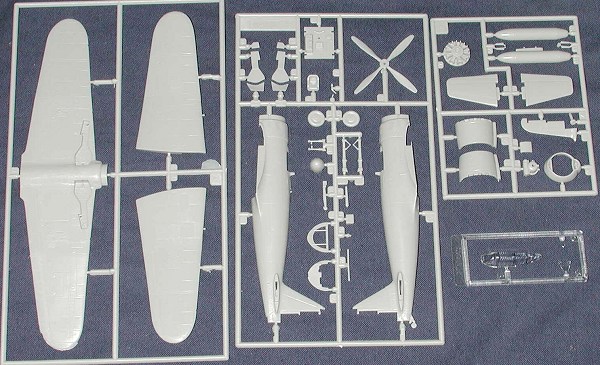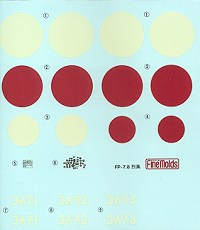
|
KIT: |
Fine Molds 1/72 A7M 'Reppu' |
|
KIT # |
? |
|
PRICE: |
$ |
|
DECALS: |
three options |
|
REVIEWER: |
Scott Van Aken |
|
NOTES: |

|
HISTORY |
Work was stopped on the 3rd-6th prototypes while the Mitsubishi engine was installed in the 6th airframe. Thanks to the larger engine, the forward airframe had to be redesigned and in October 1944, the A7M2 made it maiden flight. The new engine made the plane and plans were made to start mass production. It was hoped that this would be the answer to the Hellcat and Corsairs that were flown by the enemy. However, a violent earthquake in December 1944 and saturation bombing by B-29s destroyed the engine plant. By the end of the war, only one production plane had been completed and accidents befell half the prototypes so that only the fourth, sixth and seventh were still airworthy.
|
THE KIT |

It looks like a Hasegawa kit and is
boxed by Hasegawa, but it isn't. Fine Molds kits are just a tad rougher
around the edges and build more like a short run kit than a mainstream
Hasegawa one. These kits are intended for local consumption and as a
result, all the instructions are in Japanese. The kit has an interior as
detailed as a Hasegawa kit, including the decals for instruments. A belt
arrangement is shown for those who may wish to install them in their kit.
It is the  standard
three-point harness that all IJN aircraft carried. There are no optional
parts aside from a drop tank and the canopy is a single piece.
standard
three-point harness that all IJN aircraft carried. There are no optional
parts aside from a drop tank and the canopy is a single piece.
As I mentioned, the instructions are in Japanese but the images are enough to help out most modelers. Colors are the standard Gunze ones so deciphering the numbers shouldn't be too difficult for most of us. The decals themselves are typical Japanese in that they are thick and the white is actually a light ivory. Markings are provided for any one of the first three prototypes. I can only assume that the colors are Mitsubishi Black Green Uppers with yellow wing leading edge ID strips. The underside is a poser as I can't read Japanese. It could be that it is a light grey. It is also possible that it is orange as was typical for prototype aircraft. A third alternative is that it was bare metal. The box art is no help as it is a grey-shade rendition. I've not seen any color photos of an A7M so the mystery continues!
|
CONCLUSIONS |
One thing we can count on Fine Molds for is that they will produce some interesting kits. This one is no exception and should be a relatively painless build.
|
REFERENCES |
Japanese Aircraft of the Pacific War, by Rene J Francillon, 1979, Putnam.
If you would like your product reviewed fairly and quickly by a site that has nearly 250,000 visitors a month, please contact me or see other details in the Note to Contributors.